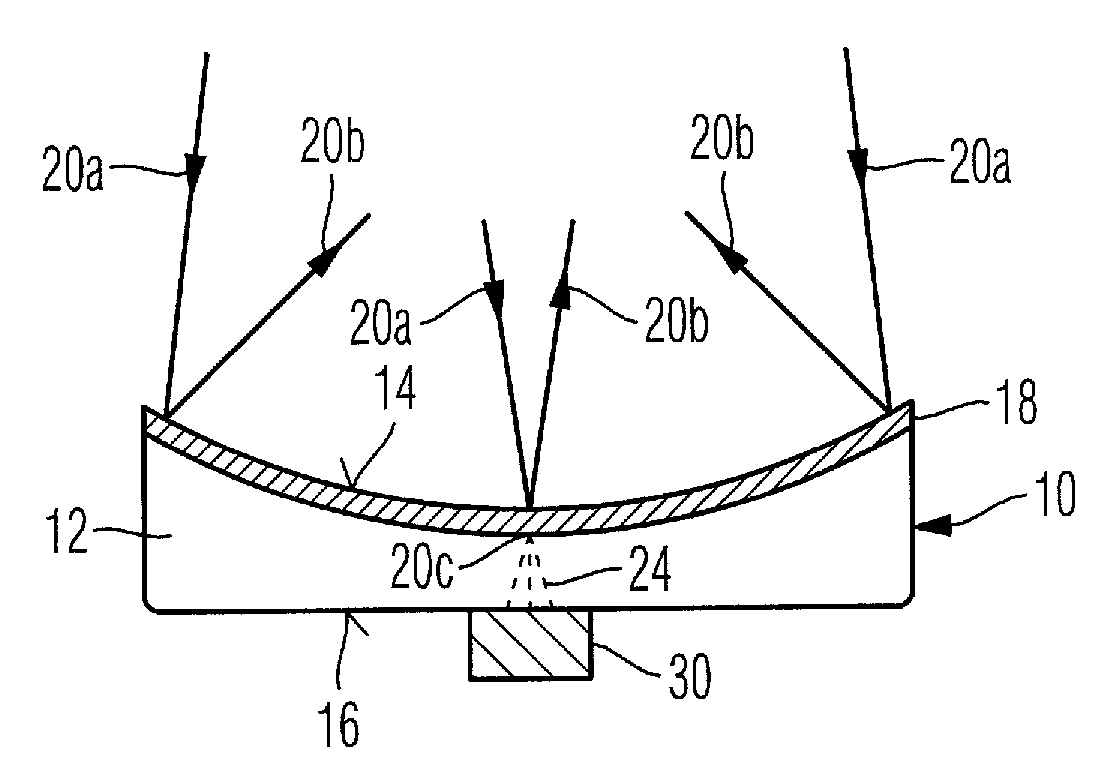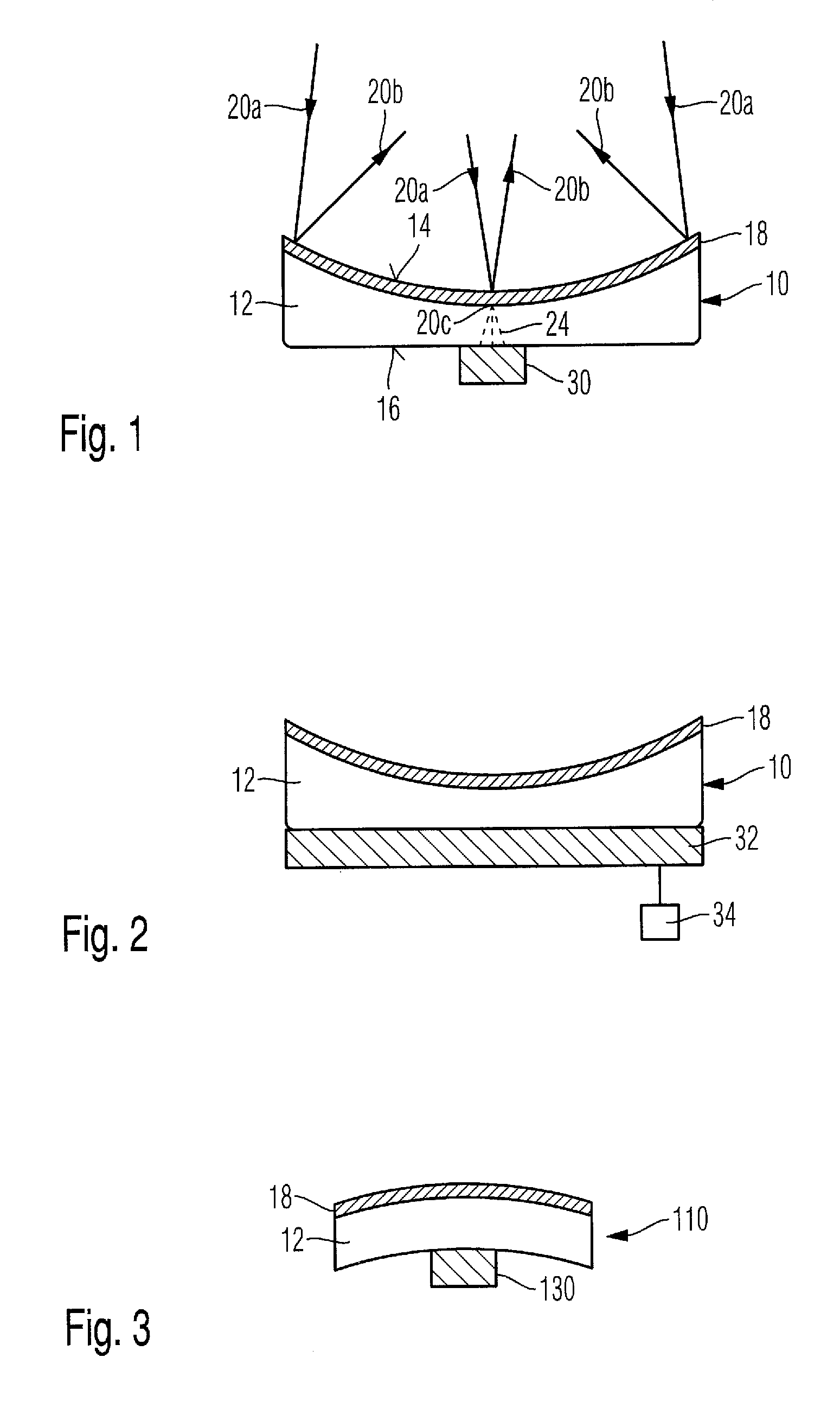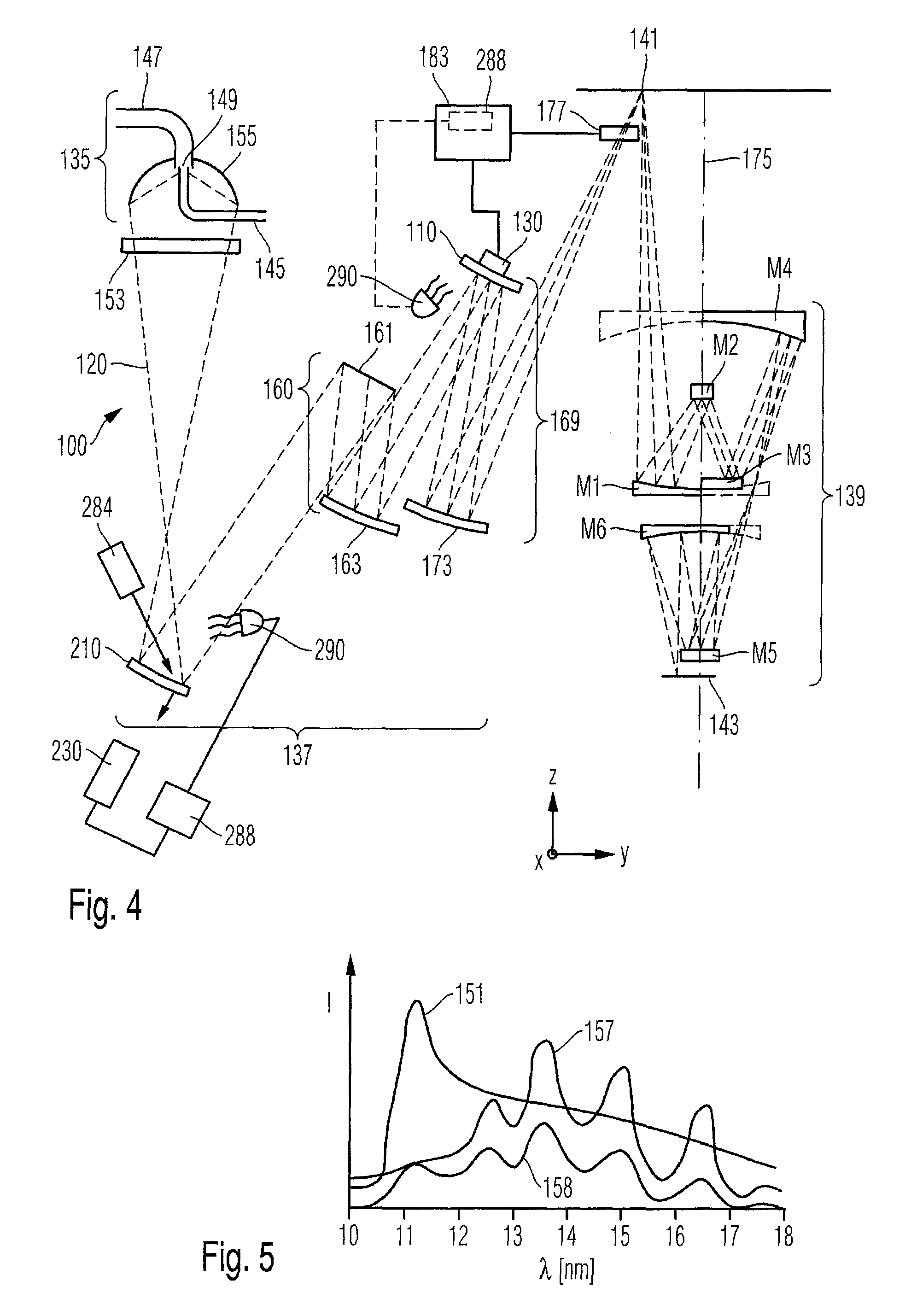Arrangement for use in a projection exposure tool for microlithography having a reflective optical element
a technology of exposure tool and microlithography, which is applied in the direction of optical radiation measurement, printers, instruments, etc., can solve the problems of changing the reflectivity of individual or all mirrors, and the reflective optical element now has regions which are no longer reflective, so as to achieve the effect of minimizing the photosensitive layer
- Summary
- Abstract
- Description
- Claims
- Application Information
AI Technical Summary
Benefits of technology
Problems solved by technology
Method used
Image
Examples
Embodiment Construction
[0065]In the exemplary embodiments described below elements which are similar to one another functionally or structurally are provided as far as possible with the same or similar reference numbers. Therefore, in order to understand the features of the individual elements of a specific exemplary embodiment, reference should be made to the description of other exemplary embodiments or to the general description of the invention.
[0066]FIG. 1 shows an exemplary embodiment of an arrangement according to the invention of a reflective optical element 10 and a radiation detector 30. The reflective optical element 10 is designed in the form of a concave mirror for use in a projection exposure tool for microlithography. For this purpose the reflective optical element 10 comprises a carrier element 12 having the form of the mirror surface. The carrier element 12 guarantees the mechanical strength of the optical element 10, and at the same time guarantees the function of the latter. The carrier...
PUM
| Property | Measurement | Unit |
|---|---|---|
| wavelength | aaaaa | aaaaa |
| temperature | aaaaa | aaaaa |
| wavelength range | aaaaa | aaaaa |
Abstract
Description
Claims
Application Information
 Login to View More
Login to View More - R&D
- Intellectual Property
- Life Sciences
- Materials
- Tech Scout
- Unparalleled Data Quality
- Higher Quality Content
- 60% Fewer Hallucinations
Browse by: Latest US Patents, China's latest patents, Technical Efficacy Thesaurus, Application Domain, Technology Topic, Popular Technical Reports.
© 2025 PatSnap. All rights reserved.Legal|Privacy policy|Modern Slavery Act Transparency Statement|Sitemap|About US| Contact US: help@patsnap.com



